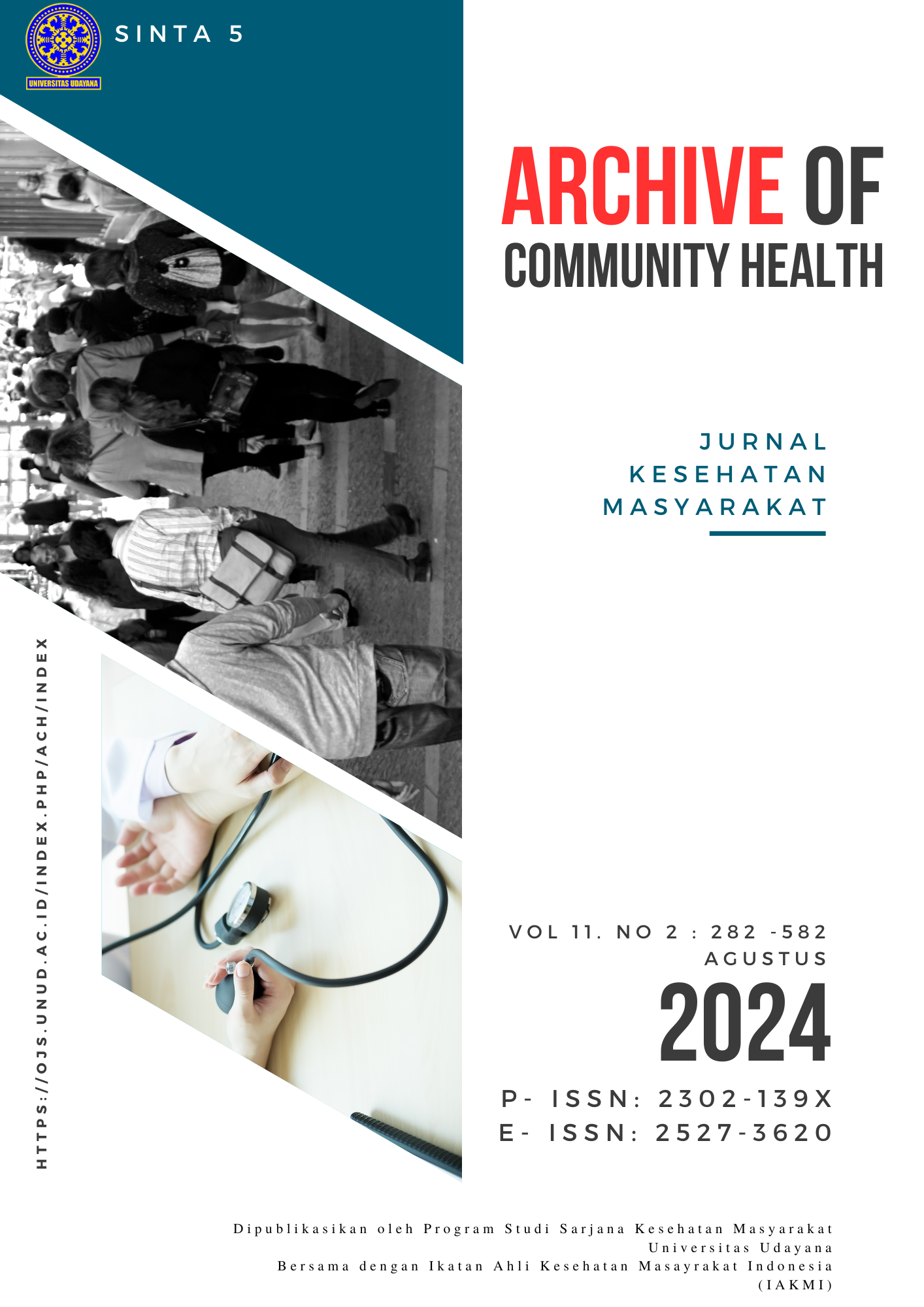ANALISIS SPASIAL KASUS DEMAM BERDARAH DENGUE DENGAN SISTEM INFORMASI GEOGRAFIS (SIG) DI KOTA DENPASAR TAHUN 2020-2022
Abstract
ABSTRAK
Demam Berdarah Dengue (DBD) merupakan penyakit infeksi yang ditularkan melalui gigitan vektor nyamuk yang sebelumnya telah terinfeksi virus dengue. Di tahun 2022 kasus DBD di Kota Denpasar kembali mengalami kenaikan dengan total sebesar 1.096 kasus dan IR 107,7 per 100.000 penduduk. Jumlah kematian juga turut meningkat yaitu CFR 0,73% atau terdapat 8 kasus kematian. Penelitianini bertujuan untuk menggambarkan distribusi kasus DBD melalui peta sebaran kasus yang ada di Kota Denpasar tahun 2018-2022 dengan menggunakan Sistem Informasi Geografis (SIG). Desain penelitian ini yaitu penelitian deskriptif analitik melalui studi ekologi. Sampel dari penelitian ini adalah seluruh kasus DBD yang ada di Kota Denpasar dari tahun 2020-2022 sebanyak 2.836 kasus yang diperoleh dari data sekunder. Analisis data dilakukan secara spasial dengan aplikasi QGIS dan uji korelasi dengan Uji Spearman Rank. Hasil dari penelitian ini menunjukkan bahwa secara spasial maupun uji korelasi terdapat hubungan antara pemukiman kumuh (2022), jumlah jumantik, cakupan ABJ, HI, dan CI sedangkan tidak terdapat hubungan kepadatan penduduk dan lingkungan kumuh tahun 2020-2021. Kasus tertinggi selama 3 tahun berturut-turut ada di wilayah kerja Puskesmas Denpasar Selatan I dengan kasus sebanyak 638 kasus dan paling rendah terjadi di Puskesmas Denpasar Selatan III sebanyak 25 kasus. Oleh karena itu perlu adanya penelusuran faktor risiko lebih lanjut oleh instansi terkait untuk dapat segera menanggulangi permasalahan yang ada dalam rangka menurunkan angka kejadian DBD di Kota Denpasar.
Kata Kunci: Demam Berdarah Dengue, Sistem Informasi Geografis
ABSTRACT
Dengue fever (DHF) is an infectious disease transmitted through the bite of a mosquito vector that has been previously infected with the dengue virus. In 2022, DHF cases in Denpasar City increased again with a total of 1,096 cases and IR 107.7 per 100,000 population. The number of deaths also increased, namely CFR 0.73% or there were 8 cases of death. This study aims to describe the distribution of DHF cases through a map of the distribution of cases in Denpasar City in 2018-2022 using Geographic Information Systems (GIS). This research design is analytical descriptive research through ecological studies. The sample of this study was all existing DHF cases in Denpasar City from 2020-2022 totaling 2,836 cases obtained from secondary data. Data analysis was done spatially with QGIS application and correlation test with Spearman Rank Test. The results of this study show that spatially and correlation tests there is a relationship between slums (2022), the number of jumantik, ABJ coverage, HI, and CI while there is no relationship between population density and slums in 2020-2021. The highest cases for 3 consecutive years were in the South Denpasar Health Center I work area with 638 cases and the lowest occurred in the South Denpasar Health Center III with 25 cases. Therefore, it is necessary to further explore the risk factors by the relevant agencies to be able to immediately overcome the existing problems in order to reduce the incidence of DHF in Denpasar City.
Keywords: Dengue Fever, Geographic Information System.














